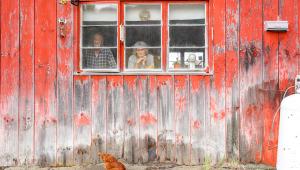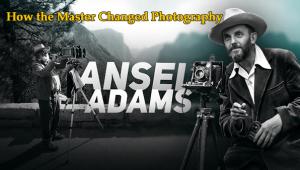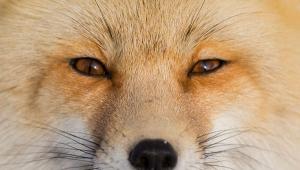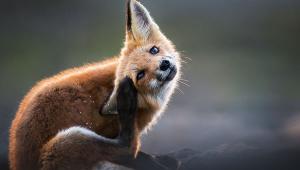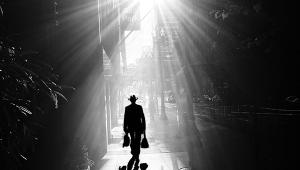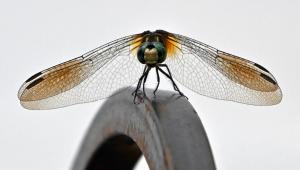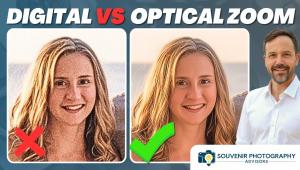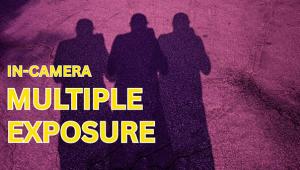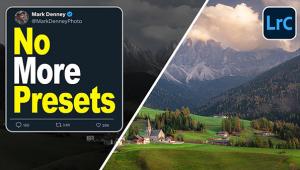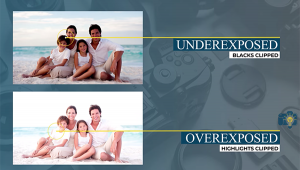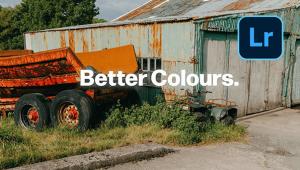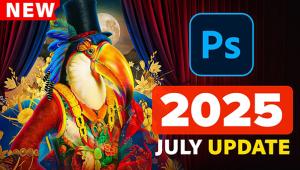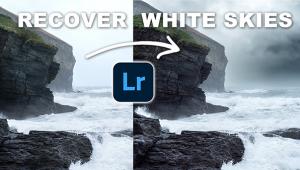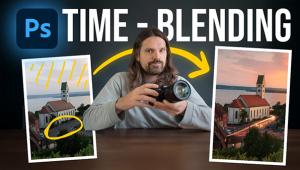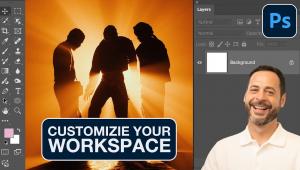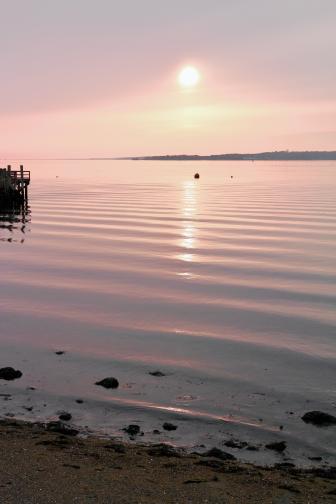Back to the Future: Pro Photographer Douglas Sonders Stays Ahead By Shooting Medium Format
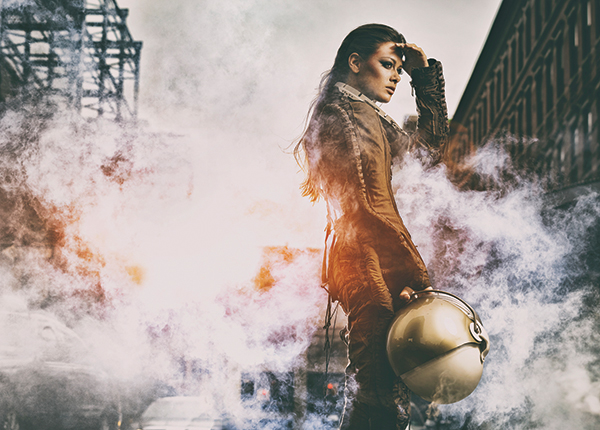
Douglas Sonders photographed professional model Nina Jade Napoletano wearing a rented flight suit outdoors in New York’s Meatpacking District. This was part of the promotional campaign to introduce the new Phase One XF, and naturally the camera used was the XF, with a 75-150mm lens. He employed a fog machine for ambiance, lighting the set with a seven-inch reflector as backlight and an octabox as the key light in front, to the right, mixing in ambient light. “It was this shoot that made me want to buy the XF. And, because a lot of my favorite photos incorporate them, I’m going to buy myself a very nice fog machine.”
For those of you who have never worked in medium format, trust me, there is a difference you can see and feel. It’s no wonder that photographers such as Douglas Sonders choose a medium format camera system over a DSLR for the bulk of their work. And in Sonders’s case, his workhorse camera system is Phase One.
The road to using some of the most advanced imaging gear began modestly for Sonders. He was a shy teen who came into his own when handed a Kodak Instamatic. He developed a penchant not only for taking pictures but also for developing them in the darkroom at school.
“Creating images gave me purpose at the time and paved the way for my future endeavors,” Sonders recalled. And at some point, he was determined to own a traditional SLR, and finally did. That eventually gave way to a digital Canon EOS D30, upon graduation from college in 2004, and culminated more recently in the EOS 5D Mark III.
However, once a steady stream of increasingly demanding clients started flowing his way, Sonders recognized he needed a premium level of gear to match the elite level of his clientele. And that led to the next step: investing in a Phase One medium format system. His Canon gear now takes a back seat to the Phase One.

“As I’d mentioned, a lot of my work was inspired by ’80s action movies. I found someone in Phoenix, Arizona, who impersonates RoboCop, using suits designed from the original mold. So I flew out there to shoot a series of images of him in that role.” Lighting came from a small beauty dish and octabox. Camera: Phase One IQ140.
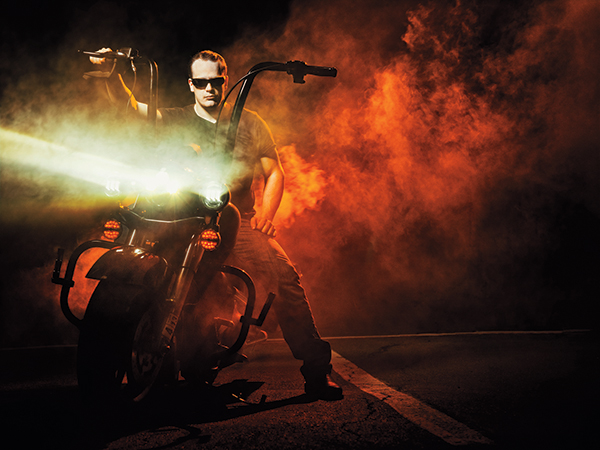
“The client wanted to showcase Capture One Pro 7’s Raw processing ability, so we brought in real bikers for this shoot. I rented two fog machines and a 1.2K HMI (gelled), giving me a constant light source beaming down from behind, to make the fog glow, with a medium softbox as the key light.” Camera: Phase One IQ160.
6K Video, Virtual Reality & Beyond
If you’ve noticed that some of Sonders’s images have a fantastical, almost cartoon-like quality to them, that’s no coincidence.
“A lot of my earlier work was inspired by my love of ’80s action films, which I grew up with,” he said. Among these was RoboCop, which logically led Sonders to embark on a personal project featuring this famed movie character.
“Over the years,” Sonders continued, “I’ve been hired to shoot some pretty awesome automotive campaigns, but deep down I’m a portrait photographer who just loves cars. One of the first magazines that hired me on a regular basis coming out of RIT was Celebrity Car Magazine. The focus on cars and people was a perfect fit for me.”
Today, Sonders wears many hats. “Clients started requesting video, and over the past seven years, the video side of my business began to flourish.” For video he turns to a Red Epic Dragon, a cutting-edge cinema camera that can shoot 6K.
“However, beyond that, I recently became interested in virtual reality, to the point where a group of us are developing and pioneering new VR technology, and bringing that technology to our clients. Aside from that, I still shoot a lot of print and still campaigns, mainly for magazines and advertising,” Sonders added.
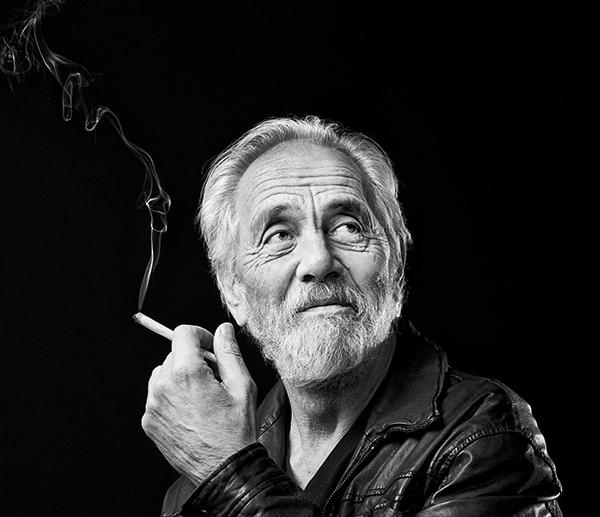
Tommy Chong of Cheech & Chong fame is featured here. “I shot this in Amsterdam. The first day of the shoot involved a number of lifestyle shots, but I didn’t feel that I’d captured his essence. So I asked if we could do a second shoot my last day there, knowing we’d only have five or 10 minutes. I positioned him in the back of a warehouse, against a black tarp, lighting with an octabox, adding edge lighting with a bare seven-inch reflector.” Camera: Phase One IQ140 and a 75-150mm lens.
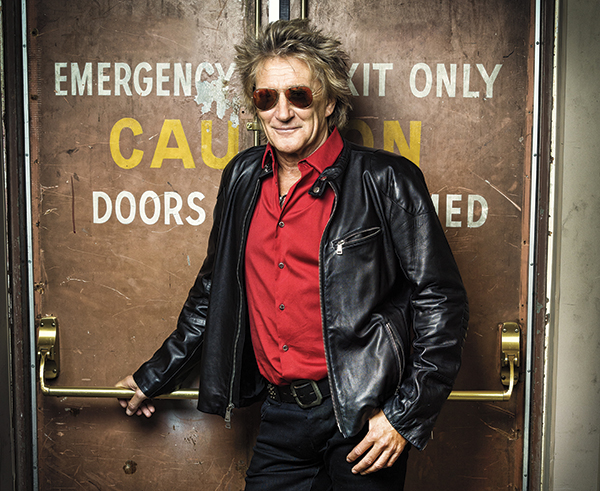
This photograph would be used to promote one of Rod Stewart’s concerts. After countless delays, it was the eleventh hour and photographer and artist finally got together, leaving only a few minutes to get the money shot. “I had to improvise on the spot, with one octabox. Stewart literally walked in front of the camera and posed himself. I didn’t really have time to check the exposure or to shoot more than two frames before he was gone. The shots came out underexposed, with the second somewhat better than the first, but, thanks to the camera’s dynamic range and Capture One, I was able to rescue this frame.” Camera: Phase One IQ140.
Problem Solving
To say Sonders is a frequent flyer is an understatement. “These days, clients know me as a producer and problem solver—I make the impossible happen. And they know me as a location shooter. I’m adaptable and so is my gear, so we can go wherever an assignment takes us.” Toward that end, Sonders packs his camera gear in a Think Tank Airport Security roller and his lights in a Pelican 1650 rolling hard case, adding a soft bag for his stands and softboxes.
“Over the years, I’ve been lucky enough to have really cool studios, but these days, because I spend over 100,000 miles on the road, I have no need of a studio.” But he does get lots of air miles, not that he’s counting. Sonders noted that he was in Washington, D.C., at a shoot location as we spoke, and will be headed to New York, Los Angeles, Texas, then Toronto, New York again, and Michigan over the next two months, with a scant few days of downtime along the way.
The Medium Format Advantage
When asked if medium format defines the way he shoots, Sonders responded: “I don’t think it defines the way I shoot, but it brings out the best in my work. Because I’m a location shooter, I love bringing out the detail in every aspect. The highlights and shadows are really important to me, especially where the shot involves skies and clouds. I love getting a lot of detail out of clouds and shooting very high contrast, but I don’t want to blow out my blacks either—it’s important that I also hold that detail in the blacks. So having something with dynamic range in the teens is really amazing!”
Sonders also cites the leaf-shutter lenses that he uses with his Phase One cameras as very important to him as a location shooter. “The fact that I can shoot at 1/1000 second with my Profoto heads outdoors and knock out the ambient light without resorting to an ND filter is pretty remarkable.”
Sonders employs Profoto D1 Air 1000 monolights, preferring them over power pack systems. To shape his lights he’ll use a large Chimera OctaPlus 3 for individuals and group portraits, but he’s also been known to employ a Photoflex Extra Large LightDome and, when he needs an edge light, strip lights. He’ll also occasionally turn to an umbrella. One light shaper that often takes center stage with his portraits is the Chimera collapsible 24-inch Octa Beauty Dish (“it’s so cool”).
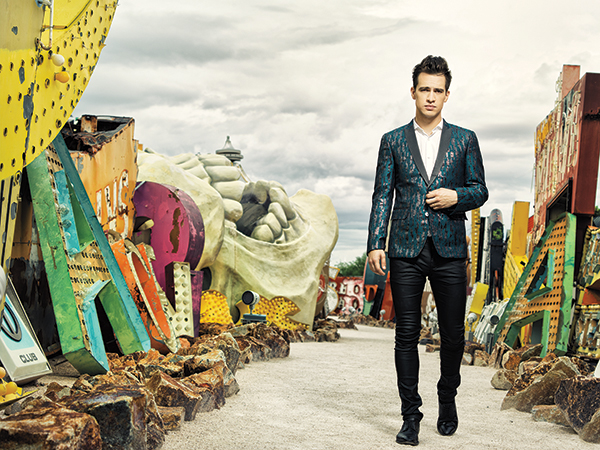
This magazine cover shot features Brendon Urie, lead singer/guitarist with the band Panic! at the Disco, a rock band from Las Vegas. “I rented space at the Neon Boneyard and used a single octabox on battery power for my key light, mixed with daylight. It was a cool, fun shoot. I love the Neon Boneyard. I just wish it weren’t so expensive to shoot there.”
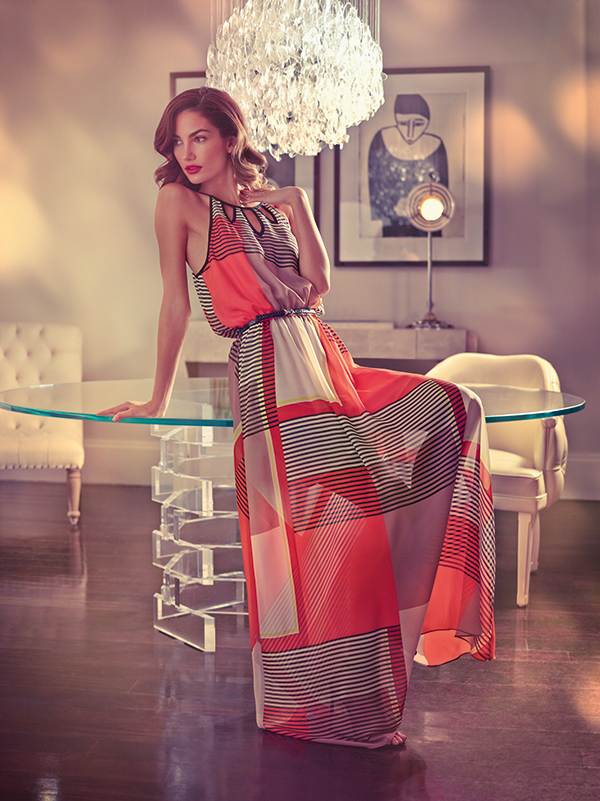
This is a fashion shoot with supermodel Lily Aldridge. Sonders captured this image by natural light with an IQ260 tethered to a computer.
A Project Close to His Heart
The proud owner of a pit bull that he rescued, Sonders was unhappy with the negative stigma surrounding this lovable breed, so he established Not A Bully, an organization focused on the advancement of pit bulls. He shares stories and photographs of pit bulls that paint them in a positive light. This led to a photo project featuring pit bulls, which garnered him a National Geographic TV special with Cesar Millan, the Dog Whisperer.
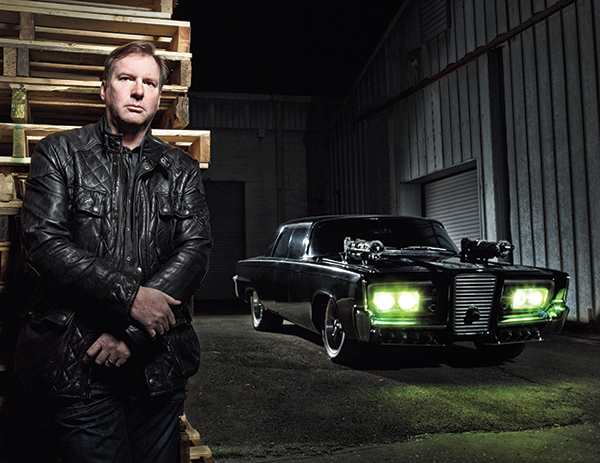
That’s the Green Hornet car from the movie of the same name. “This was shot as part of my photo series called Unicorn Project, where I photographed movie and TV cars. This gentleman owns one of the last surviving vehicles from that movie. I shot this with four lights, all in camera, on a Phase One IQ140.”
In Sonders’s Gear Box
* Phase One XF and IQ140 back with Vulture Equipment A4 neck strap
* Schneider lenses: 75-150mm LS, 55mm LS, 28mm LS
* Canon gear: 5D Mark III, 24-70mm f/2.8L gen 2, 16-35mm f/2.8L, 100mm f/2.8L Macro, 75-200mm f/2.8L IS
* 4 x Profoto D1 Air 1000 strobes
* 2 x Vagabond Mini battery packs
* Manfrotto 1004BAC stands
* Tether Tools Tether Table Aero Kit
* 15-inch MacBook Pro with Capture One Pro 8 and Photoshop CC 2015
Based in New York City, Douglas Sonders lists as his influences Mark Seliger, Platon, Dave Hill, and Annie Leibovitz. To see more of his work, visit www.sondersphotography.com.




